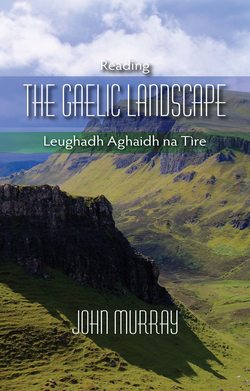Читать книгу Reading the Gaelic Landscape - John Murray - Страница 12
На сайте Литреса книга снята с продажи.
4: A Brief Guide to Gaelic Grammar and Pronunciation
ОглавлениеSeveral linguistic obstacles impede the Gaelic learner trying to understand Highland landscape through place-names. It is easy enough to learn a basic vocabulary from the guides produced by OS, Scottish Natural Heritage and the National Parks. But the formation of place-names, using nouns and adjectives, and how both change in the genitive and the plural, can make understanding elusive.
The variety of definite article forms, like a’, an, an t-, am, na, na h-, nan and nam applied to the two genders of Gaelic nouns makes translation difficult. Misunderstanding is commonplace. A well-known angling guide to the lochs and rivers of Scotland includes 5 pages of entries for these 8 forms of definite article in alphabetical order. Of course, English entries are not listed under of, of the and the. Such a misunderstanding makes the guide hard to use and denies an area of potential interest to the reader.
Pronouncing the written word is often cited as another difficulty in understanding Gaelic. But in comparison to English, the language is more logical and consistent in its orthography. Once the spelling system is understood, it has very few sounds which are difficult to say. Instead of trying to learn pronunciation through lists of vowel and consonants combinations, this chapter uses some common generic place-names as examples. They are also used to illustrate points of grammar.
Several common Gaelic toponymic terms have come into English and Scots and need little translation. These include brae / bràigh (bry), ben / beinn (byn), cairn / càrn, corrie / coire (CAWryuh), craig / creag (crayk), dun / dùn (doon), glen / gleann (glown), knock / cnoc (crochk), kyle / caol (coeuhl), machar / machair (MACHehr) and strath /srath (srah). Other words such as pàirc (perrk), like the Scots park meaning field, and eilean (EHlan) meaning island, are so close to English that they are easily recognised. Pronunciation is explored along with grammar but the International Phonetic Alphabet, which many find obscure, is not used. In the system used here, the stressed first syllable is shown in capitals.
The best guide to plurals and genitives of definite and indefinite masculine and feminine nouns and any qualifying adjectives can be found at:
http://www.akerbeltz.org/index.php?title=Masculine_nouns
http://www.akerbeltz.org/index.php?title=Feminine_nouns
Though the genitive is commonplace in place-names recorded in the late 19th century, in contemporary spoken Gaelic, it is falling out of use.
